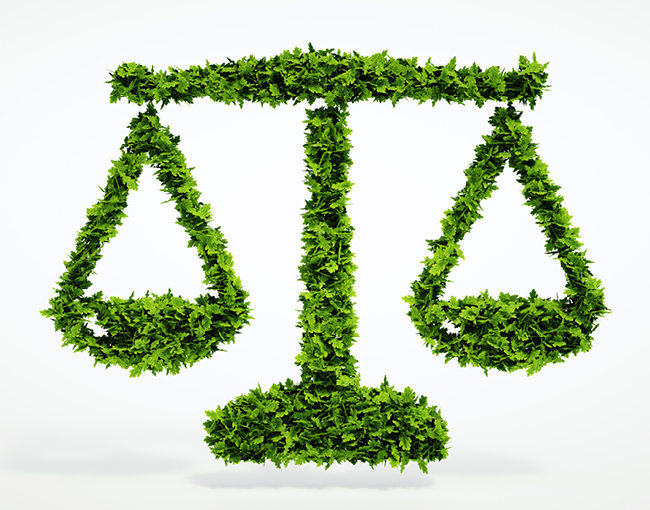Home > Insights > Publications > EPA incorporates environmental justice into enforcement policy: How can regulated industries prepare?

Although not new, environmental justice (EJ) issues have played a prominent role in the EPA’s agenda under new Administrator Michael Regan. In a recent message to EPA employees, Administrator Regan instructed all EPA offices to integrate environmental justice considerations into their plans and activities. The EPA further demonstrated its commitment to EJ by issuing a memorandum directing enforcement staffers to strengthen enforcement efforts in EJ communities.
The April 30, 2021, memo lays out three enforcement program goals designed to advance environmental justice. These goals include: (1) increasing the number of facility inspections in EJ communities; (2) resolving violations in EJ communities using remedies that provide tangible benefits for the community; and (3) improving engagement with EJ communities on enforcement cases that most directly impact them.
These measures are part of the EPA’s response to Executive Order 14008 (Jan. 27, 2021) and the Biden Administration’s promised focus on environmental justice. For the regulated community, these new goals will likely mean greater scrutiny on facility operations and activities as well as greater complexity (and higher costs) in negotiating remedies for noncompliance.
Targeted increases in facility inspections
While recognizing current constraints on the Agency’s ability to conduct in-person facility inspections, the memo directs staff to increase inspections in areas that most seriously threaten EJ communities. Historically, the EPA has identified (1) lead contamination, (2) drinking water, (3) air quality, and (4) hazardous waste sites as the most significant national EJ challenges. It can be expected that inspections will continue to target these key areas and the frequency and diligence of these inspections will increase.
Remedy selection in EJ areas
The memo further directs EPA staff to “think creatively” in proposing remedies for noncompliance, including use of “early and innovative relief” such as issuing administrative orders, seeking injunctive relief or requiring installation of fence-line monitoring and transparency tools. Additionally, the memo urges staff to seek remedies that will mitigate past impacts from pollution, including restitution for victims of environmental crimes. Notably, the memo expresses a desire to resume and expand use of supplemental environmental projects (SEPs). The Trump Administration’s rule limiting the use of SEPs is currently under review by the Department of Justice.
Improved community engagement
In the event of noncompliance, facilities operating in EJ areas can expect EPA to increase the use of community engagement tools such as press releases and public meetings, including community involvement in the development of remedial action or clean-up plans. Additionally, EPA plans to increase awareness of the availability of database information that will allow community members to search for information on facilities, including compliance and enforcement history information. Such action is likely to substantially increase public interest in (and potentially opposition to) facility operations.
How can you prepare?
As a first step, facility personnel should determine whether their facility lies within an area identified or recognized by EPA as an EJ community. The EPA’s Environmental Justice Screening and Mapping Tool (EJSCREEN) is a publicly-available tool that combines environmental and demographic data and can assist in determining whether a facility is located within or near an EJ area.
The regulated community can prepare for potential increases in inspections and enforcement action by considering the following steps:
- Review and/or update existing environmental management systems (EMS) or consider developing an EMS.
- Adoption of an EMS can help a facility develop concrete plans and strategies for continuous improvement of its environmental performance.
- The development and implementation of an EMS also demonstrates the facility’s commitment to compliance.
- Perform an environmental compliance audit.
- Compliance audits allow a facility to evaluate current compliance, identify potential problems, and adjust practices or undertake corrective action as needed.
- Compliance audits may be performed by internal staff or outside consultant.
- Consider voluntary disclosure of non-compliance.
- EPA and some states provide incentives for facilities to voluntarily discover and fix violations — e.g., potential penalty reductions, avoidance of criminal prosecution.
- Maintain good relationships with state regulators.
- Most environmental programs have been delegated to the states, which means that state inspectors and regulations will be the first point of contact.
- Many state regulators are more than willing to discuss regulatory requirements, provide guidance and offer compliance assistance where necessary.
- Ensure facility personnel know what to do during an inspection and make sure that required records are well-organized and easily accessible.
- Be a good neighbor.
- Attempt to foster positive relationships with neighbors and the local community.
- Where possible and appropriate, respond to and proactively address concerns expressed by community members.
As the Biden Administration continues to implement its policy agenda, EPA’s focus on EJ issues is likely to sharpen. Regulated facilities, especially those located in EJ communities, should work toward identifying and correcting potential violations now to prevent potentially costly and time-consuming enforcement action.
If you have questions regarding this article or environmental enforcement actions generally, please contact Sara Chamberlain or Ryan Russell Kemper in Thompson Coburn’s Environmental practice area.
